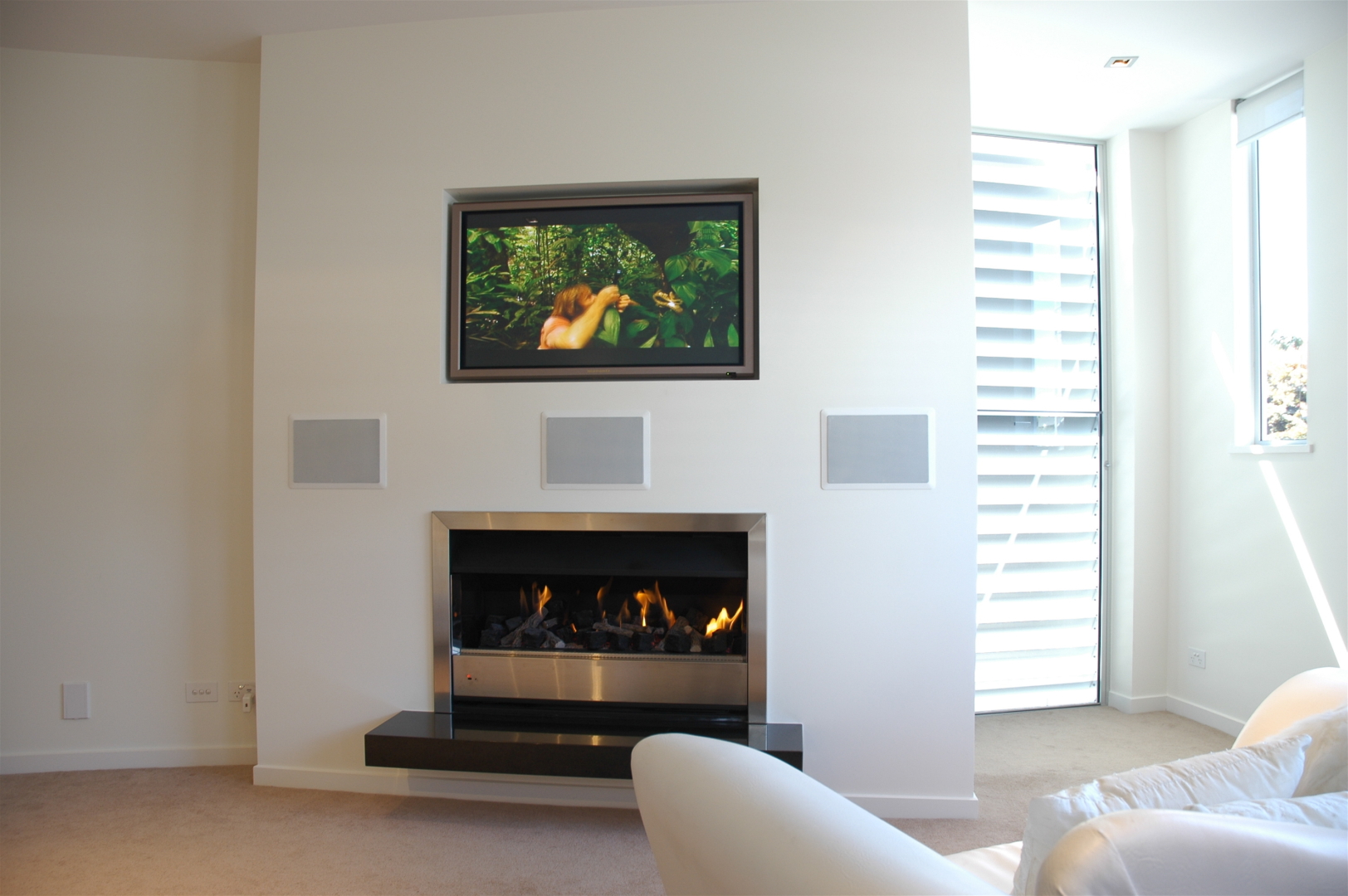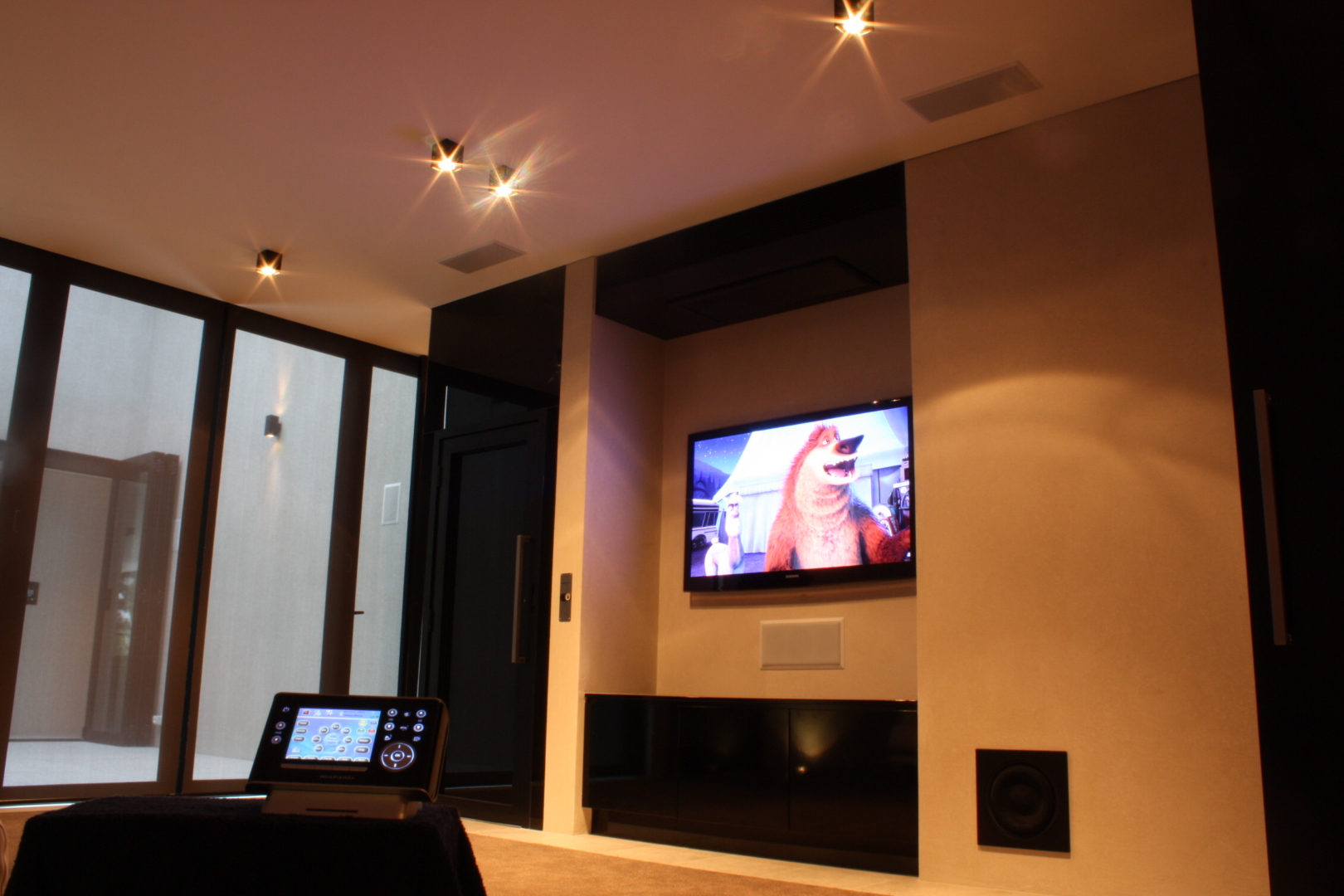Spotlight on…Media Rooms
What to consider when you want to achieve that cinematic effect in your own home
Back in the day, New Zealanders were so keen to get their first taste of television that lobby groups were formed to give the government a hurry on. The state responded and fortunate Aucklanders lapped up the original official broadcast on June 1, 1960 – a two-hour line-up that included a performance by the Howard Morrison Quartet.
Fast forward seven decades and the digital world is a wonderland of possibility. “Some of our clients actually design their entire house around a media room,” says Ben Green, David Reid Homes franchisee for Coromandel. “Particularly after the Covid-19 lockdowns, they’ve become more passionate about stay-at-home movies and investing in the best experience possible.”
Although Ben admits it’s generally men who push for a media room, requests from clients vary. There are those who want a bells-and-whistles home theatre tucked away in the basement, others with young children who simply require a separate space near the main living area so the adults can talk without cartoon antics drowning out the conversation and still others with older teens who require a dedicated gaming room for big kids of all ages to be incorporated somewhere in the floorplan. “It all depends how a media room fits into day-to-day life,” says Ben.
For home theatres, soundproofing is crucial, and Ben is a fan of using precast concrete walls and ceilings to deliver on this score. It’s certainly worth the investment since plasterboard just doesn’t cut it. “We also advise using acoustic panelling on the walls and ceilings to absorb the sound, so it doesn’t bounce off hard surfaces,” he says. Solid-core timber doors to access the space are a must and sound seals around the doors are very effective.
Ben advises to use automated blinds that fit in the U-channel of the window jamb for complete black-out conditions and says many clients also choose to paint the room in dark, rich shades to lend a dramatic ambience.
When it comes to technical audio-visual knowhow, an expert, certified by CEDIA (Custom Electronic Design & Installation Association) is a savvy choice. It means they are trained, tested, examined and certified to install equipment to a global standard.
We asked Brendon Reid, founding director of Automation Associates, for his ear-to-the-ground advice on setting up the systems that are both sound in principle and in practice.
Get the balance right.

A media room is a multi-purpose space with many functions: a place to entertain, watch movies, enjoy gaming or act as a rumpus room. Its key components – the display, speaker system and control system – are often teamed with lighting control, and curtain or blind control.
These days, typically, the display is an LED panel. Although projectors are used, in modern homes with acres of glass they are ill advised as no projector lamp is brighter than the sun!
Screen size is a much-debated subject and bigger is not necessarily better, and it’s no surprise to learn that men are the main offenders here. “If you’ve ever been to an Imax show and come out feeling a bit knackered, that’s because the width of the display has an effect on your physiology. Too wide and the brain can’t process it,” explains Brendon. “You end up having to constantly move your eyes or head to adjust – and that’s tiring.”
When creating an immersive experience, where the aim is a “suspension of disbelief”, the size of the screen is easily calculated using a bio-physical relationship between the viewer and the screen, that you can turn to. During the construction phase, sit in your media room (even if it’s just at framing stage) on the spot where you envisage your chair or sofa will be. Then extend your hands out at shoulder height as far as you can. Hold them horizontally, palms facing down. Touching your thumbs, stretch out your fingers as wide as you can. Then look at the wall; the extremities of your two little fingers will be at the width your screen needs to be. Two hands together with fingers outstretched makes for a cinema-like experience, three hands put together is Imax territory. “’Rightsizing’ is a phrase we use in the industry,” says Brendon. “If your display is too big, you’ll end up with neck issues and the room’s usability will drop.”
Making sound choices.

If your goal is to create an immersive experience that engages the whole household, good sound is equally as important as the picture. It’s a complex arena because, of course, not everyone has the same level of hearing, but did you know that women also hear different frequencies to men? According to Brendon, if there’s an issue with sound, it’s generally clarity rather than volume that’s the cause.
When it comes to dialogue intelligibility, women hear best at a slightly lower frequency to men and vice versa. Astounding as it may seem, women are biologically attuned to hear men better and men to hear women. “That’s one reason why during World War Two, the radio operators were women. With all the background noise in a bomber, the pilots would find a woman easier to hear,” says Brendon.
How do we translate this to the ‘lounging-on-the-couch’ context? One way would be to up-spec from an off-the-shelf soundbar to one with specifications that cover all the frequencies responsible for dialogue which go as low as 500Hz. A step up would be to invest in inwall or freestanding speakers. Brendon explains that soundbars were created because as screens got bigger and the bezels more streamlined, manufacturers were forced to start putting speakers into the back of the display – not ideal. “A soundbar put in front of the display screen basically takes the sound out of the TV and squirts it towards you,” he says.
Nevertheless, a speaker in a soundbar is relatively small and can’t capture the rich, low-frequency sounds of, say, a baritone opera singer. So, you add a subwoofer. And while a soundbar and a subwoofer can go a long way as a solution, it’s only the beginning of the journey. If you want your media room to be the one that every kid in the street wants to come to, or that’s picked for watching the All Blacks with your mates, there’s a whole lot more to it than that. “You can’t decently represent the variety of sound – such as all forms of music, the crowd cheering at the rugby, or the evening news – with just one speaker,” says Brendon. A combination of tweeter, woofer and subwoofer are needed to cover the range. Often homeowners install five or seven speakers in the ceiling and think, ‘job done’. The problem is that, instinctively, humans perceive sound coming from above and behind them as a threat. The science of psycho-acoustics tells us that our core brain puts a lot of emphasis on sound that emits from outside of our field of view. “It makes us feel uneasy,” says Brendon. Although ceiling speakers, up out of the way, seem like a good idea, they don’t sound as good as an in-wall speaker. Yet because in-wall speakers are built for the average depth of a wall cavity, which varies from country to country, there’s no telling how it is going to perform.
The truth is that the best-quality sound, equal to any occasion, will come from a bank of incredibly large, ugly floor-standing speakers dotted around the room. Not an option for many! At home, Brendon’s own set-up sports three speakers in the front wall, four in the ceiling and a projector. “When working within the axes of budget, time and aesthetics, there’s always compromise,” he admits.
Ace the acoustics.

If you stand in a squash court and clap your hands, in might take a second or more for the echo to die away. Translated into a room with lots of glass and a concrete or bare timber floor, that’s a whole lot of noise bouncing off the ceiling which creates a tailing-off effect that muddies the sound. For better dialogue intelligibility, choose blinds or curtains to soak up the sound and put a rug on the floor.
Also, be aware of ‘null’ spots – areas of silence that in rooms designed with dimensions that are multiples of each other (such as 3m x 3m square or 3m x 6m). Brendon says that in perfect volumetric cubes, the sound waves will bounce around, cancelling each other out and for a given frequency the standing wave will form a null or quiet spot. “This is often the case when someone can’t hear the television in one part of the room and for the other person it is turned up really loud. It’s not that they are going deaf; it’s that they are sitting in the null.” The trick here is to use a bookcase, hang some art or install a piece of furniture against the back or side wall to break up the waves. “The best rooms for home cinema have the weirdest configurations,” says Brendon.
You’re in control.
Fighting over the remote is a thing of the past; today there’s an app for everything which puts the power into the palm of your hands. But often you end up needing spider fingers to achieve the best AV experience: there’s an app for the TV, another to operate the soundbar, perhaps one to dim or turn on the lights and a separate one for the curtains and blinds. That’s when you need an AV integrator to put them all into one app. An audio-visual expert can give the best advice so that next time Mum rings in the middle of the movie, one tap is all it takes.
Article by writer claire.mccall@xtra.co.nz as featured in the David Reid Homes Magazine


